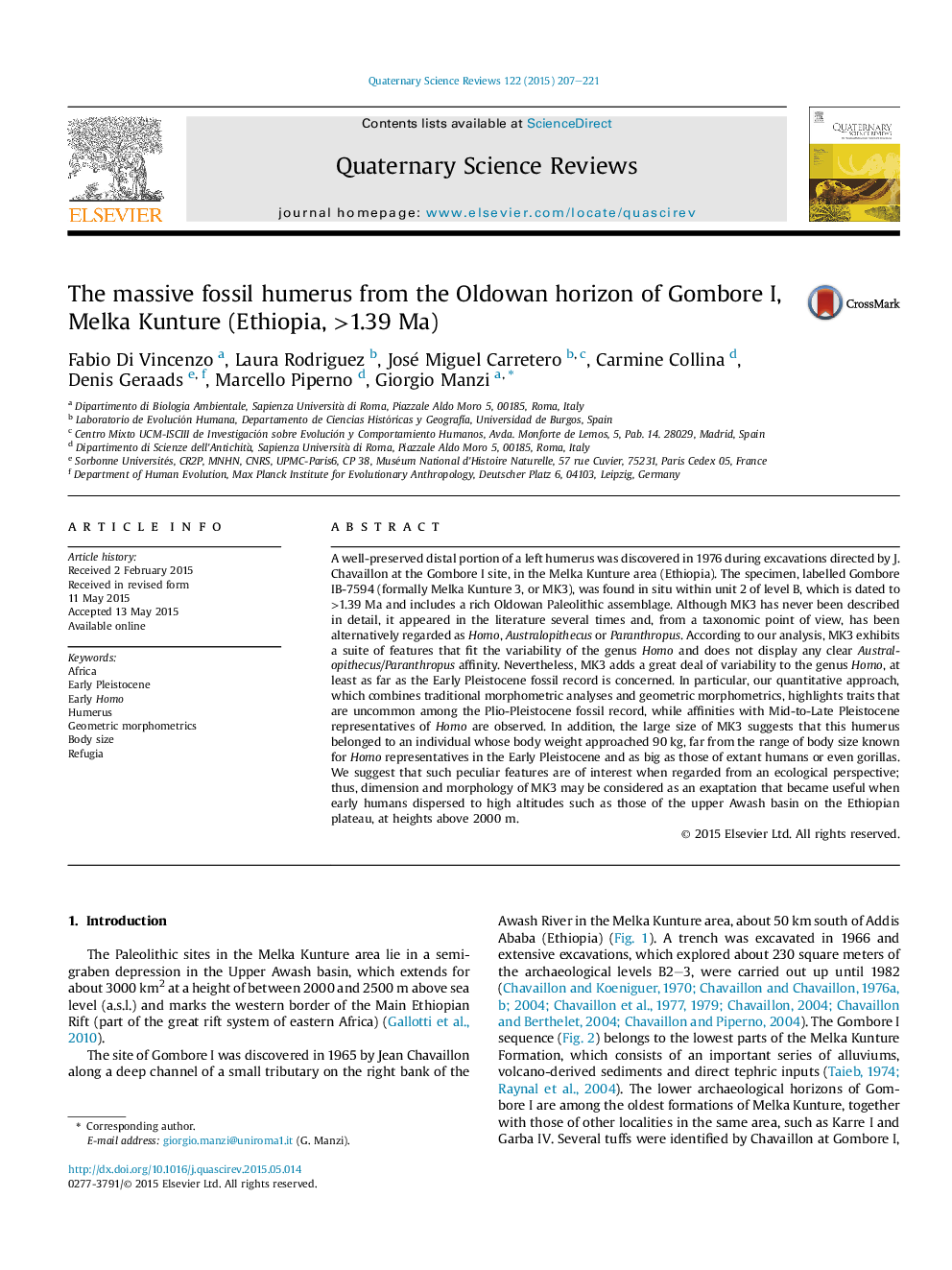| Article ID | Journal | Published Year | Pages | File Type |
|---|---|---|---|---|
| 6445867 | Quaternary Science Reviews | 2015 | 15 Pages |
Abstract
A well-preserved distal portion of a left humerus was discovered in 1976 during excavations directed by J. Chavaillon at the Gombore I site, in the Melka Kunture area (Ethiopia). The specimen, labelled Gombore IB-7594 (formally Melka Kunture 3, or MK3), was found in situ within unit 2 of level B, which is dated to >1.39Â Ma and includes a rich Oldowan Paleolithic assemblage. Although MK3 has never been described in detail, it appeared in the literature several times and, from a taxonomic point of view, has been alternatively regarded as Homo, Australopithecus or Paranthropus. According to our analysis, MK3 exhibits a suite of features that fit the variability of the genus Homo and does not display any clear Australopithecus/Paranthropus affinity. Nevertheless, MK3 adds a great deal of variability to the genus Homo, at least as far as the Early Pleistocene fossil record is concerned. In particular, our quantitative approach, which combines traditional morphometric analyses and geometric morphometrics, highlights traits that are uncommon among the Plio-Pleistocene fossil record, while affinities with Mid-to-Late Pleistocene representatives of Homo are observed. In addition, the large size of MK3 suggests that this humerus belonged to an individual whose body weight approached 90Â kg, far from the range of body size known for Homo representatives in the Early Pleistocene and as big as those of extant humans or even gorillas. We suggest that such peculiar features are of interest when regarded from an ecological perspective; thus, dimension and morphology of MK3 may be considered as an exaptation that became useful when early humans dispersed to high altitudes such as those of the upper Awash basin on the Ethiopian plateau, at heights above 2000Â m.
Related Topics
Physical Sciences and Engineering
Earth and Planetary Sciences
Geology
Authors
Fabio Di Vincenzo, Laura Rodriguez, José Miguel Carretero, Carmine Collina, Denis Geraads, Marcello Piperno, Giorgio Manzi,
